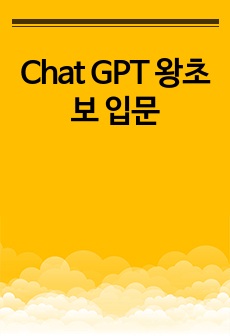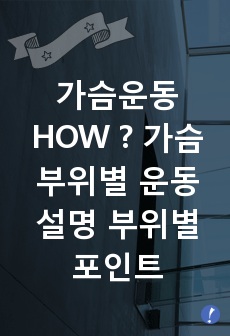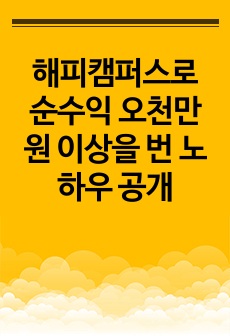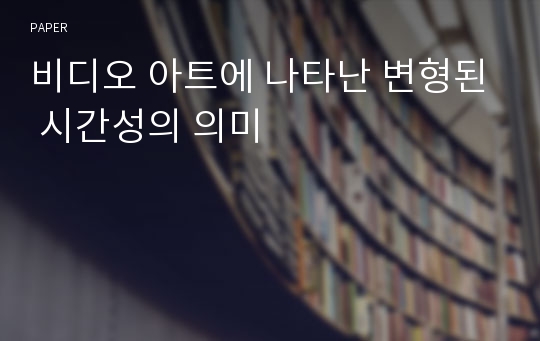* 본 문서는 배포용으로 복사 및 편집이 불가합니다.
서지정보
ㆍ발행기관 : 동아시아문화학회
ㆍ수록지정보 : 동아시아문화와예술
ㆍ저자명 : 전혜숙
ㆍ저자명 : 전혜숙
목차
I. 머리말II. 비디오 아트와 시간성
III. 시간 구조의 변형 - 기계 처리된 시간성
IV. Slow-Motion
Ⅴ. 맺음말
참고문헌
한국어 초록
This essay treats with video art works that transform and manipulatethe time or temporality with various ways especially digital
technologies. The works which are treated in this essay are Douglas
Gordon’s <24 Hour-Psycho>(1993), Bill Viola’s Passion series,
Christian Kessler’s <Transverser>(2000), Martin Reinhart and Virgil
Wiedrich’s <TX-Transform>(2000).
Recently many attention has been given to role of video image
as privileged mediator of the transition from the cinema to digital.
That is the singularity of video images as a kind of mediator
between extensive and intensive (or human and machine) time.
Originally video is inherent time, many video artists use this factor
for re-operating human perception and for generating psychological
effects.
For example, Scottish artist Douglas Gordon’s appropriation
pieces involving digital manipulation of found film footage engage
the temporal dimension of cinema through a practice that is specific
to video not only as a technical image medium but as the privileged
mode through which images, as the material basis of contemporary
perception, are actually lived or experienced. By reproducing Alfred
Hitchcock’s film <Psycho>(1960) in extreme slow motion, Gordon’
s <24 Hour-Psycho> makes the viewer disrupt the original narrative
of the film to such a degree that memory and perception clash
over the reconstruction of the film. The viewer fails to recreate the
original story and has a kind of temporal stake - the loss of time,
the need for time which is critical to depressed subjectivity.
Bill Viola uses a technical capacity intrinsic to cinema, the
capacity to shoot at high-speed, extended and transformed by
video, in order to contaminate the perceptual present with a nonlived
that is not, as in photography or the cinema of time-image, the
recurrence of a tertiary past, but rather the material infrastructure of
‘the enlarged now itself’. It is Viola’s insight into the autonomy of
emotion from time and thus from any temporal fixation of it in any
particular medium that makes his work the exemplar of the medial
revolution. Viola’s aesthetic deprivileges the technical frame in favor
of the framing activity of a body affectively open to the nonlivable,
nonactual, and imperceptible. This digital aesthetics makes us see
that digital image in fact is affection-image.
영어 초록
This essay treats with video art works that transform and manipulatethe time or temporality with various ways especially digitaltechnologies. The works which are treated in this essay are DouglasGordon’s <24 Hour-Psycho>(1993), Bill Viola’s Passion series,Christian Kessler’s <Transverser>(2000), Martin Reinhart and VirgilWiedrich’s <TX-Transform>(2000).Recently many attention has been given to role of video imageas privileged mediator of the transition from the cinema to digital.That is the singularity of video images as a kind of mediatorbetween extensive and intensive (or human and machine) time.Originally video is inherent time, many video artists use this factorfor re-operating human perception and for generating psychologicaleffects.For example, Scottish artist Douglas Gordon’s appropriationpieces involving digital manipulation of found film footage engagethe temporal dimension of cinema through a practice that is specificto video not only as a technical image medium but as the privilegedmode through which images, as the material basis of contemporaryperception, are actually lived or experienced. By reproducing AlfredHitchcock’s film <Psycho>(1960) in extreme slow motion, Gordon’s <24 Hour-Psycho> makes the viewer disrupt the original narrativeof the film to such a degree that memory and perception clashover the reconstruction of the film. The viewer fails to recreate theoriginal story and has a kind of temporal stake - the loss of time,the need for time which is critical to depressed subjectivity.Bill Viola uses a technical capacity intrinsic to cinema, thecapacity to shoot at high-speed, extended and transformed byvideo, in order to contaminate the perceptual present with a nonlivedthat is not, as in photography or the cinema of time-image, therecurrence of a tertiary past, but rather the material infrastructure of‘the enlarged now itself’. It is Viola’s insight into the autonomy ofemotion from time and thus from any temporal fixation of it in anyparticular medium that makes his work the exemplar of the medialrevolution. Viola’s aesthetic deprivileges the technical frame in favorof the framing activity of a body affectively open to the nonlivable,nonactual, and imperceptible. This digital aesthetics makes us seethat digital image in fact is affection-image.참고 자료
없음태그
"동아시아문화와예술"의 다른 논문
 水神제사와 感孕모티프 : 神話와 儀式의 구조학적 연구 사례10페이지
水神제사와 感孕모티프 : 神話와 儀式의 구조학적 연구 사례10페이지 靑龍과 白虎3페이지
靑龍과 白虎3페이지 세계전람회 그 건축사를 위한 공헌14페이지
세계전람회 그 건축사를 위한 공헌14페이지 음양오행과 연극9페이지
음양오행과 연극9페이지 Deleuze between territory and feng shui8페이지
Deleuze between territory and feng shui8페이지 앤디 워홀과 대중주의32페이지
앤디 워홀과 대중주의32페이지 미술을 통한 페미니즘41페이지
미술을 통한 페미니즘41페이지 엘 그레코 El Greco의 후기작품 연구38페이지
엘 그레코 El Greco의 후기작품 연구38페이지 서기전 5~4세기 그리스 극장건축의 전개와 비극의 수용25페이지
서기전 5~4세기 그리스 극장건축의 전개와 비극의 수용25페이지 1980년대 초반 민중미술운동의 서양미술 수용에 대한 고찰32페이지
1980년대 초반 민중미술운동의 서양미술 수용에 대한 고찰32페이지


























